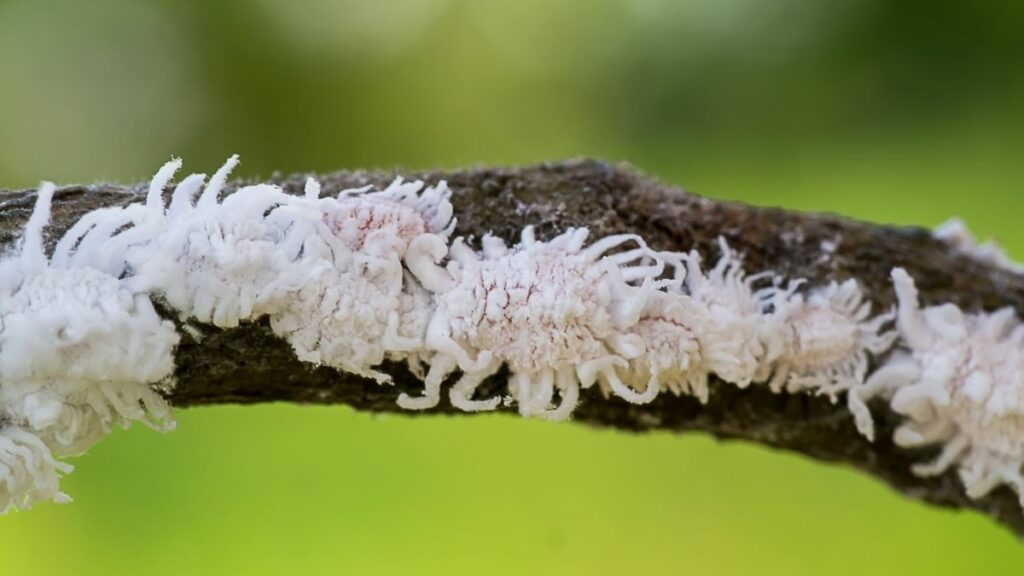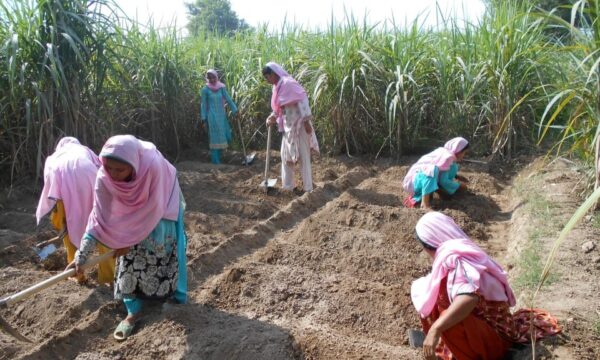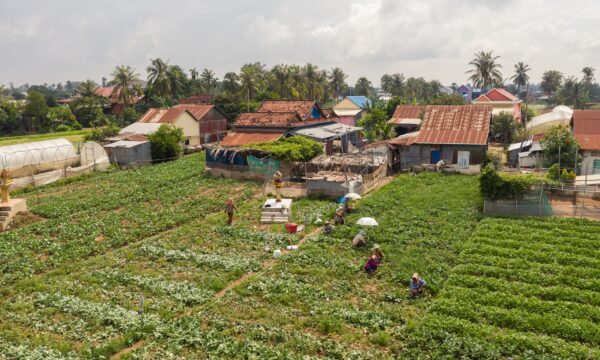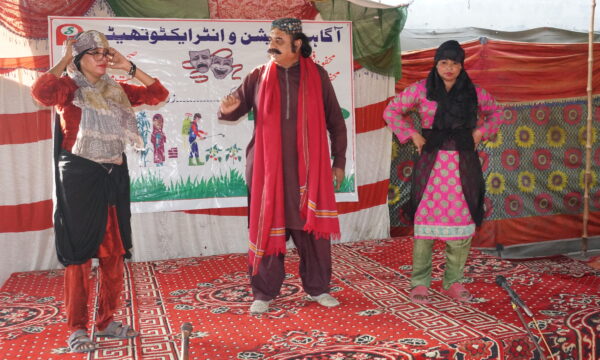Invasive species can cause enormous damage, affecting biodiversity, the environment, and people in invaded areas. They disproportionately affect communities in poor rural areas; people who depend on natural resources and healthy ecosystems to make a living.
It is widely accepted that prevention is better than cure, however, how do you work out which species pose the greatest threat to a region? Pest Risk Analysis seeks to answer this question.

Pest Risk Analysis
By evaluating scientific and economic evidence, the tool helps to determine whether an organism is a pest, whether it should be regulated, and what quarantine and biosecurity measures are required to prevent it from spreading.
A recent PlantwisePlus workshop in Pakistan focused on how CABI’s Pest Risk Analysis Tool can reduce the risk invasive species pose to the country. Invasive species are recognised as an economic threat in Pakistan where agriculture contributes heavily to GDP. Small-scale farmers, who suffer most from the consequences of invasives, make up a large proportion of the population in many areas.
CABI Pest Risk Analysis workshop
The workshop, which took place in Islamabad, was organised and carried out by CABI under the PlantwisePlus programme. It provided an overview of invasive species, their impacts, and the benefits of the PRA tool before focusing on identifying the species that pose the greatest threat to Pakistan trade.
A total of 45 participants attended the workshop, providing the technical expertise needed for the pest risk assessment. They included members of the Government’s Department of Plant Protection, quarantine and plant protection officers, national scientists, research organisations, expert entomologists, and plant pathologists.
Pest Risk Analysis training
The training was coordinated and facilitated by Mr. Abdul Rehman (Deputy Director Programs-CABI), Dr. Muhammad Naeem Aslam (Country Coordinator Plantwise Pakistan) and members of CABI’s Plantwise team. The training aimed to build the capacity of the staff from different public institutions especially the Department of Plant Protection and help establish a national pest risk analysis team trained to address import regulation issues.
Participants were given an overview of the tool and how it works before taking part in hands-on group training exercises. These exercises included group discussions and case-study-based activities.
Participants from the Department of Plant Protection had already conducted a pest risk analysis for some of the pests and so were able to present the outcomes of those assessments. They also provided feedback on the Pest Risk Analysis scheme and its computer version.
After the presentation of each section of the scheme, participants ran the Pest Risk Analysis process on a pest of concern that they had either selected or been assigned and had collected information on prior to the meeting. The CABI team was on hand to provide guidance to each participant on their individual assessment.

Two approaches to Pest Risk Analysis
The two main Pest Risk Analysis approaches were discussed at the workshop. The first method looks at the pathway, which is any means that enables the entry and spread of a pest. The other approach concentrates on the pest.
The workshop paid particular attention to commodity/trade pathways with participants taking part in practical group exercises. A range of pathway scenarios was investigated included the import of wheat for consumption from Ukraine to Pakistan, soybean grain import for consumption from Argentina to Pakistan, and date (fresh and processed) for export from Pakistan to the USA.
Pathway analysis
The groups were set the task of defining the pest risk analysis pathway as precisely as possible. Descriptions included:
- Latin and common name(s) of the plant or plant product area of origin
- any pertinent production practices in the area of origin
- a description of any harvesting, packing, processing, or inspection steps to which it is subjected prior to export
- any in-transit treatments or shipping conditions that might influence its pest risk
- intended destination
- description of end-use.
The groups had access to a number of tools and information resources, including CABI’s Invasive species Compendium in order to understand and evaluate the species and the risk they each pose.
Assessment results
After individual and groups assessments of potential invaders, the results were consolidated and an overall consensus was made on the species to analyse using the tool.
The species were sorted and eliminated based on their presence in Crop Protection Compendium and Invasive Species Compendium. The experts reviewed the resulting list and removed species known to already occur in Pakistan as well as species unanimously considered as not important for plants in the country.
A total of 65 species including 36 invertebrates and 29 plant pathogens were identified, assessed, and sorted on basis of the overall score for further steps and conducting Pest Risk Analysis.
Further reading
CABI’s range of invasive species knowledge resources and tools have been developed for a variety of users such as environmental managers, researchers, farmers, plant protection officers, and more.
Pest Risk Analysis tool – Pest risk analysis is an evolving and dynamic field. In the past 20 years, countries all over the world have adopted pest risk analysis as a means to inform regulatory decisions for plant protection.
Crop Protection Compendium – The world’s most comprehensive site for information on crop pests
Invasive Species Compendium – CABI’s open access Invasive Species Compendium is the only up-to-date encyclopedic resource that brings together a wide range of science-based information. Find detailed coverage of invasive species threatening livelihoods and the environment worldwide.
PlantwisePlus
PlantwisePlus is a global programme, led by CABI, to increase incomes and grow safer and higher quality food through sustainable approaches to crop production.
Working in close partnership with relevant actors, PlantwisePlus strengthens national plant health systems from within, enabling countries to provide farmers with the knowledge they need to lose less and feed more.
CABI gratefully acknowledges the financial support of the Directorate General for International Cooperation (DGIS, Netherlands), the European Commission Directorate General for International Partnerships (INTPA, EU), the UK Foreign, Commonwealth & Development Office (FCDO), the Swiss Agency for Development and Cooperation (SDC), for the PlantwisePlus programme.
For more information visit: https://www.plantwise.org
Facebook: https://www.facebook.com/Plantwise
Twitter: https://twitter.com/CABI_Plantwise (@CABI_Plantwise)
Related News & Blogs
How does crop rotation help keep pest populations in control?
Crop rotation is a simple, effective way to manage pests, improve soil health, and boost yields. Suitable for all growers, crop rotation supports sustainable agriculture and reduces the need for chemical inputs. By targeting pest lifecycles and reducin…
6 June 2025




